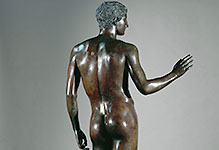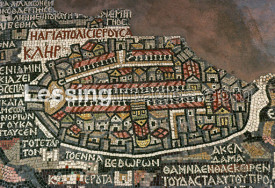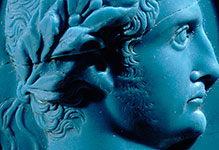
Antiquity
Ancient Egypt, Ancient Greece, Imperial Roman Period, Ancient Middle East.

#03030211
Stone bowl from Khafajeh, Iraq, Early Dynastic period, c2600-c2400 BC. The carvi...

#03030212
Crushed skull of a soldier with a copper helmet from Ur, Mesopotamian, southern...

#03030213
Necklaces of faience beads and pendants, Canaanite, from Lachish (modern Tell ed...

#03030216
Wallpainting: "L'investiture" Beginning 2nd millenium BCE; Mari, amorrite pala...

#03030217
Winged spirit (Génie protecteur) 7th century BCE; Tell Ahmar; reign of Ashurban...

#03030218
Blue goat Approximately 8th century BCE; Tell Ahmar Element of a decorative fi...

#03030219
Two assyrian dignitaries placed behind the royal throne, scene of audience Tell...

#03030220
Male head AO 23014

#03030221
Wallpainting depicting a scene of a hunt for wild donkeys 194 CE; Salhiyé (anci...

#03030222
Centaur and fish 244-245 CE; ceiling of the large hall of the synagogue, Salhiy...

#03030223
Capricorn 244-245 CE; ceiling of the large hall of the synagogue; Salhiyé (anci...

#03030224
Fragment of a stele representing a Parthian warrior 2nd century CE; Salhiyé (an...





